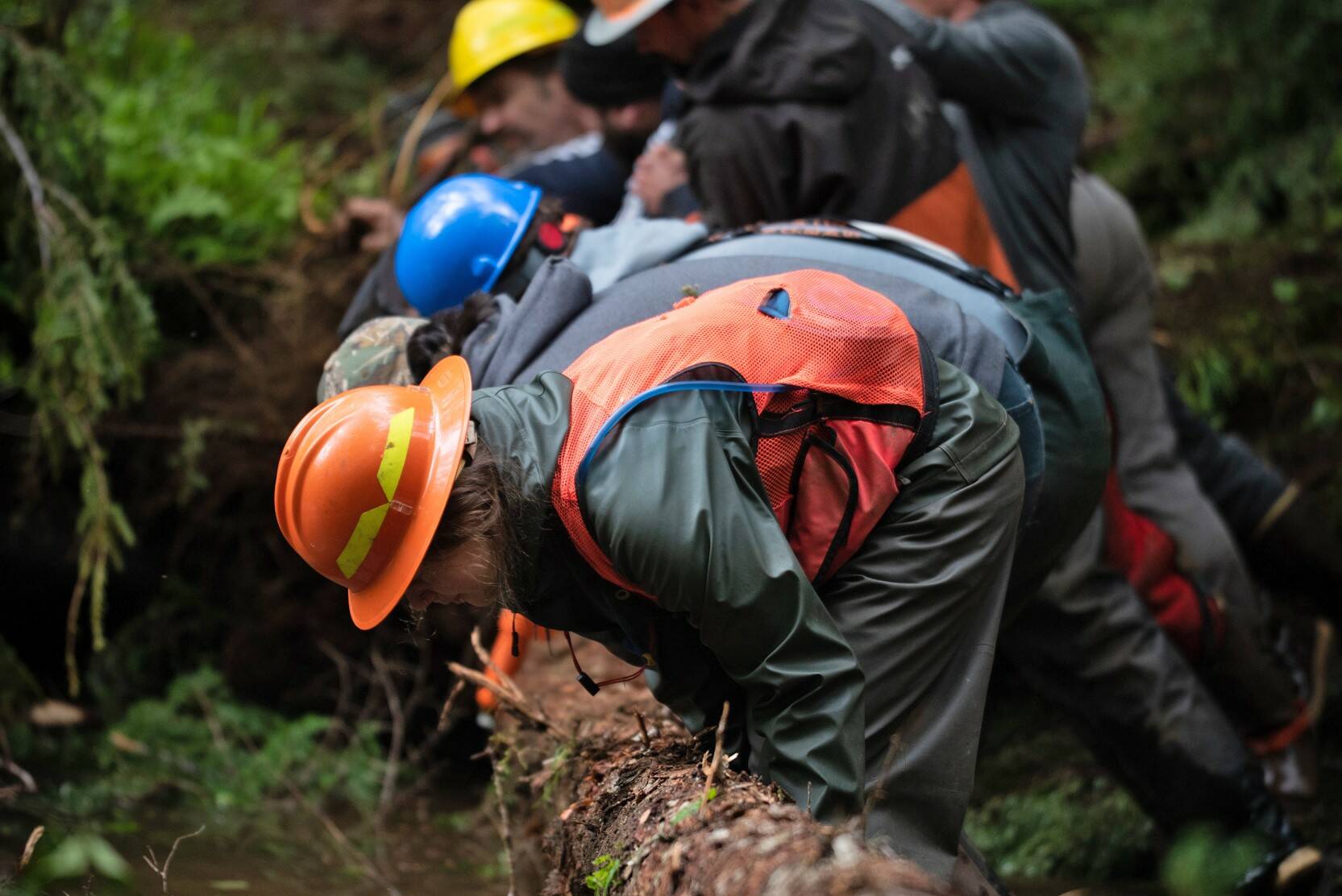The U.S. Forest Service is seeking public comment until Oct. 18, on the Southeast Alaska Sustainability Strategy, a new proposal from the Biden administration to fund community-led development projects.
The exact sort of community development projects that will be funded is yet to be determined, said Chad VanOrmer, USFS deputy regional forester, in an interview with the Empire, and figuring that out is the goal of the public comment period.
“We’ve designed the process to be open,” VanOrmer said. “We anticipate we’ll get a lot of ideas and proposals, then we’ll and try and prioritize. I’ve never really gone through this before, we’re asking people to jump right in and engage with us and hopefully build relationships.”
The Forest Service is currently overseeing the public comment period, but VanOrmer said Southeast Alaska Sustainability Strategy is able to work with other agencies within the U.S. Department of Agriculture and described the process as a “one-USDA approach.” USDA has already committed $25 million to existing projects but is looking for suggestions from communities as to where additional funding might be allocated. Without specific projects to site, VanOrmer couldn’t say how much money would be spent on the program or over how long.
“We have a steering team comprised of Forest Service, Natural Resources Conservation Service and (USDA) Rural Development working in tandem to implement these goals,” VanOrmer said. “That really opens up the opportunities.”
In previous public hearings, VanOrmer said Forest Service staff repeatedly heard calls for an increase in health care infrastructure. Health care clinics are not something the Forest Service does, VanOrmer said, but Rural Development does.
[New fund established for Indigenous-led development]
The sustainability strategy also includes a commitment to end large-scale logging on the Tongass National Forest and reimplement the 2001 Roadless Rule, which puts additional environmental protections on the region.
Reimplementation of the Roadless Rule drew rebuke from Alaska’s Congressional delegation, who issued a joint statement following the announcement saying the decision would cripple the economy of Southeast Alaska.
“Let me be clear: $25 million doesn’t even come close to covering the economic damage that this administration’s policies will inflict on Southeast Alaska,” Sen. Lisa Murkowski, R-Alaska, said in a July 16, statement. “Alaskans have the right to make a living, support our families, and connect our communities and have a much greater interest in seeing the Tongass healthy and sustainably managed than outside extreme environmental groups pulling the strings in the Biden administration.”
The Forest Service has identified some areas of need for the region including, fisheries, mariculture, tourism and renewable energy. If USDA heard strong support from a community regarding a particular issue, VanOrmer said that idea would be considered but needs to fall within the scope of what the department was able to accomplish.
The Forest Service has set up a webpage with information on the SASS and options for submitting public comment, including the option to submit specific proposals for investment. The page gives examples of previous collaborations between the Forest Service and regional entities in Southeast Alaska, including restoration of the Spasski Creek near Hoonah. That project was done with the Hoonah Indian Association’s Hoonah Native Forest Partnership program, a youth conservation corp program.
The relationship between the Forest Service and tribal entities is historically fraught and last year several tribal governments pulled out of negotiations with USDA over the Roadless Rule. The Trump administration began the process to lift the rule, but that process was met with legal challenge and then reversed by the Biden administration.
There were areas of tension, said Ian Johnson, environmental coordinator for Hoonah Indian Association, but the relationship between the Forest Service and the Hoonah Native Forest Partnership has been good.
“From the tribe’s perspective, we’d love to see those dollars that accomplish a project, but we also want to feel like there’s some sort of growth,” Johnson said. “For example, we’re looking at our energy systems and we’re pursuing biomass for heating and electricity.”
VanOrmer said the ability to cross agency boundaries within USDA to solve problems was a career first for him and the Forest Service hoped to build better relationships with regional entities.
“We are wide open to different ideas,” VanOrmer said. “Right now, we’re not really limiting the scope of those proposals, we want to open the door to those kinds of ideas.
Public comment can be submitted online at: www.fs.usda.gov/goto/r10/sass, or submitted by email to: r10_webmail@fs.fed.us.
• Contact reporter Peter Segall at psegall@juneauempire.com. Follow him on Twitter at @SegallJnuEmpire.

